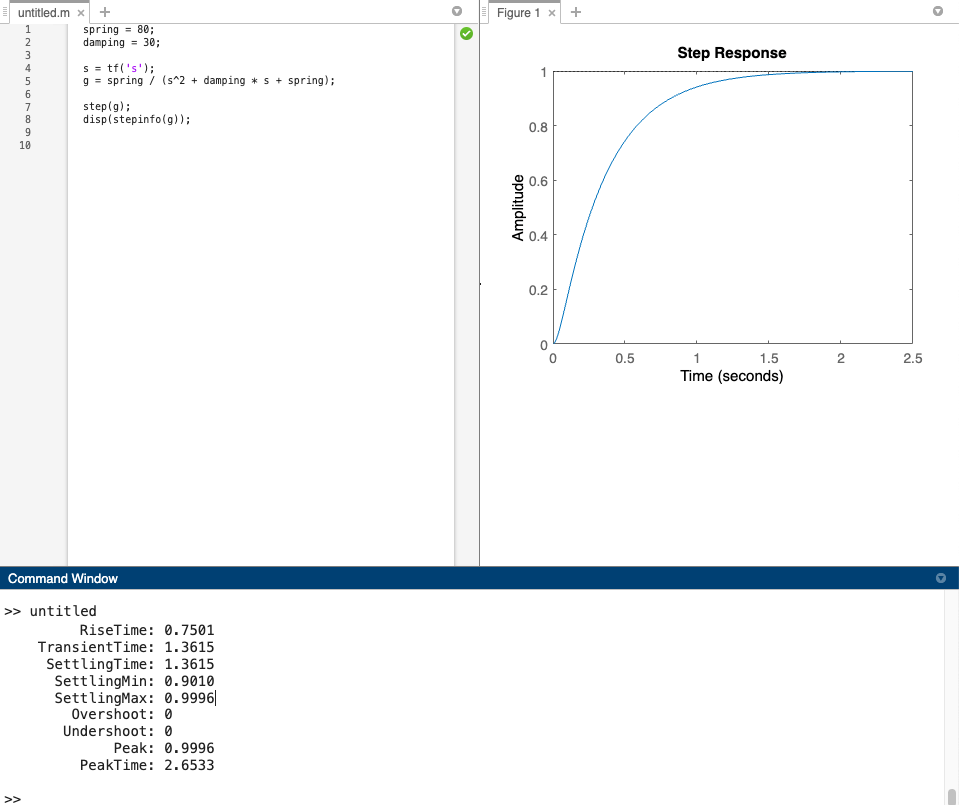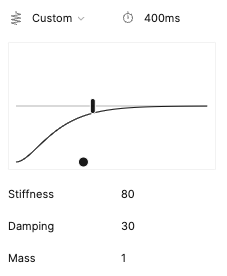I want to understand how spring animation works so I can replicate it on Android as a developer. I have already read documentations on Figma and this blog post How Figma put the bounce in spring animations
But the animation duration does not match my understanding of mass, spring, damper physics Mass-spring-damper model - Wikipedia. The expected animation duration should be much longer given the parameters stiffness, damping, mass.
For example, in the following screenshot, the duration is 400ms using stiffness = 80 damping = 30 and mass = 1.
But when the differential equations for mass, spring, damper is solved (see screenshot below using matlab and laplace transform method), it gives an approximate animation duration of 1.3615s, a much longer time than what is designed on figma.
So what is going on within figma? What mathematically model is used to calculate the animation duration? How can I implement the exact animation on android (or other platforms) provided by design?



